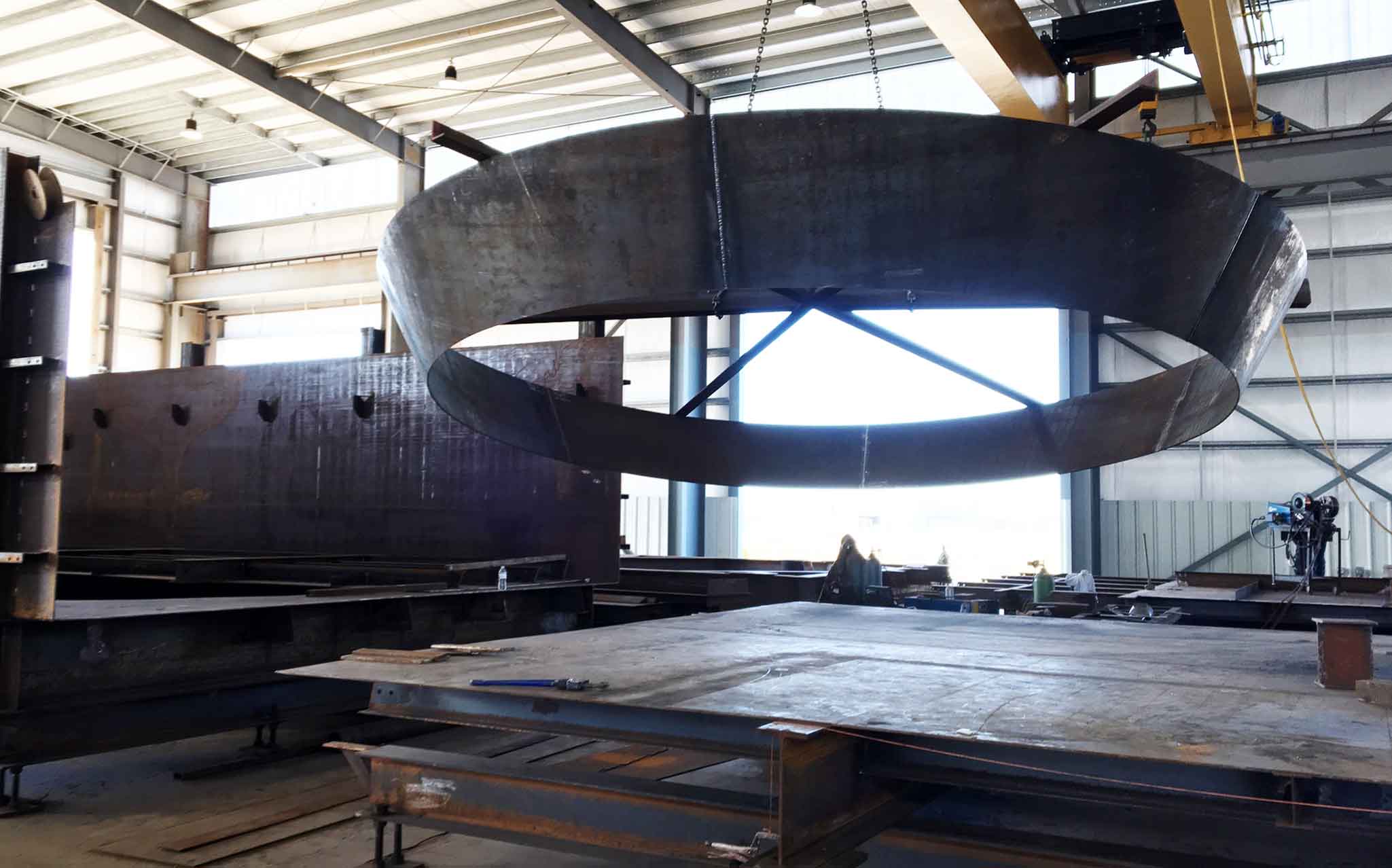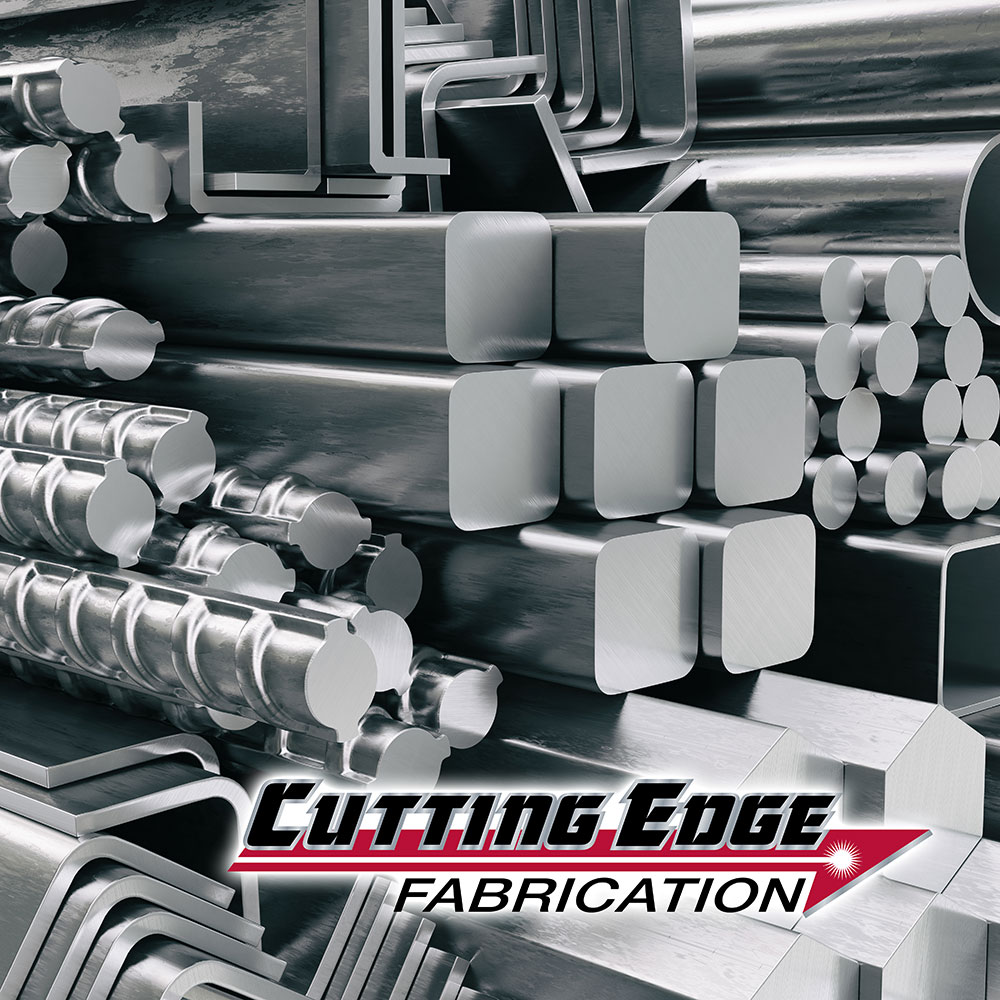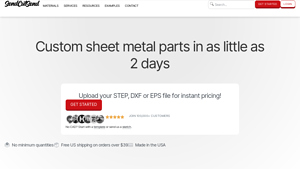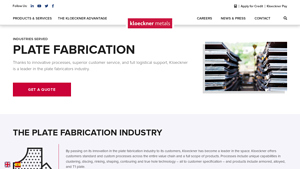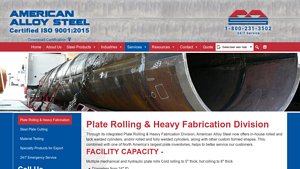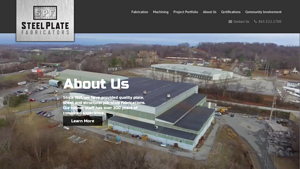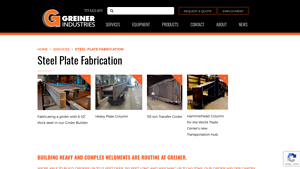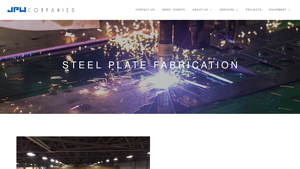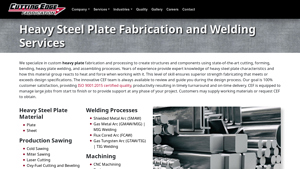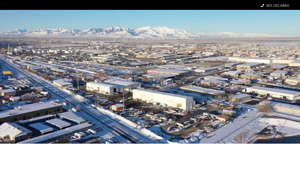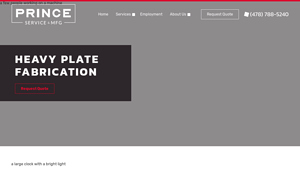Plate Fabrication Guide: Type, Cost, Top List…
Introduction: Navigating the Global Market for plate fabrication
In an increasingly interconnected world, sourcing high-quality plate fabrication services presents unique challenges for B2B buyers, particularly in regions like Africa, South America, the Middle East, and Europe. With varying standards, material availability, and technological capabilities, navigating the global market can be daunting. This guide aims to demystify the complexities of plate fabrication by offering a comprehensive overview of the different types of fabrication processes, their applications across industries, and strategies for effectively vetting suppliers.
Understanding the intricacies of plate fabrication—from laser cutting and CNC machining to welding and forming—is essential for making informed purchasing decisions. With insights into cost considerations, quality assurance measures, and the latest technological advancements, this guide empowers international buyers to identify reliable partners that align with their project requirements.
Whether you are a procurement officer in Nigeria looking for cost-effective solutions or a project manager in Brazil needing customized fabrications for a large-scale project, this resource equips you with the knowledge to streamline your sourcing process. By leveraging the information contained within, you can enhance your operational efficiency, reduce lead times, and ultimately drive profitability in your business endeavors.
Understanding plate fabrication Types and Variations
| Type Name | Key Distinguishing Features | Primary B2B Applications | Brief Pros & Cons for Buyers |
|---|---|---|---|
| Laser Cutting | High precision, fast cutting speeds, minimal kerf width | Aerospace, automotive, and electronics | Pros: Excellent accuracy, quick turnaround. Cons: Higher initial costs for setup. |
| Plasma Cutting | Versatile for various thicknesses, effective for rough cuts | Construction, heavy machinery | Pros: Cost-effective for thick materials. Cons: Rougher edge finish compared to laser cutting. |
| CNC Machining | Automated precision machining, complex geometries | Custom parts manufacturing, industrial tools | Pros: High repeatability, complex shapes possible. Cons: Longer lead times for setup. |
| Oxy-Fuel Cutting | Uses flame for cutting, effective for thicker materials | Shipbuilding, metal fabrication | Pros: Suitable for very thick plates. Cons: Slower than laser and plasma cutting. |
| Forming | Involves bending and shaping metal plates | Structural components, frames | Pros: Versatile for various shapes. Cons: Requires additional processes for finishing. |
What Are the Key Characteristics of Laser Cutting in Plate Fabrication?
Laser cutting is distinguished by its high precision and speed, making it ideal for applications requiring intricate designs. It utilizes focused laser beams to cut through materials, producing minimal kerf and heat-affected zones. This method is particularly suitable for industries such as aerospace and electronics, where accuracy is paramount. Buyers should consider the higher initial setup costs against the benefits of rapid production and reduced material waste, making it a suitable choice for high-volume orders.
How Does Plasma Cutting Compare to Other Methods?
Plasma cutting employs a high-velocity jet of ionized gas to cut through conductive materials. It is versatile and effective for various thicknesses, making it popular in construction and heavy machinery applications. While it is cost-effective for thicker materials, the edge finish may be rougher compared to laser cutting. Buyers should weigh the benefits of lower operational costs against the need for potential secondary finishing processes to achieve desired tolerances.
Why Choose CNC Machining for Plate Fabrication?
CNC machining automates the precision shaping of metal plates, allowing for complex geometries and high repeatability. This method is widely used in custom parts manufacturing and industrial tools. While it offers the ability to produce intricate designs, buyers should be prepared for longer lead times due to the setup required for each unique project. The investment in CNC machining can yield significant returns in efficiency and quality for businesses with ongoing production needs.
What Advantages Does Oxy-Fuel Cutting Offer?
Oxy-fuel cutting utilizes a flame to cut through thick metal plates, making it particularly effective for shipbuilding and large-scale metal fabrication. This method is slower than laser and plasma cutting but excels in handling very thick materials. Buyers should consider the trade-off between speed and material thickness when selecting this method, as it may be the best option for projects requiring substantial metal sections.
How Does Forming Enhance Plate Fabrication Capabilities?
Forming involves bending and shaping metal plates into desired configurations, making it essential for creating structural components and frames. This method allows for versatility in producing various shapes but may require additional processes for finishing. Buyers should assess their project requirements to determine if forming is suitable, as it can complement other fabrication techniques for comprehensive solutions in metalworking.
Key Industrial Applications of plate fabrication
| Industry/Sector | Specific Application of plate fabrication | Value/Benefit for the Business | Key Sourcing Considerations for this Application |
|---|---|---|---|
| Oil & Gas | Custom pressure vessels and piping systems | Enhanced safety and efficiency in operations | Certification of materials, compliance with industry standards, and local sourcing options. |
| Construction | Structural components for buildings and bridges | Increased durability and load-bearing capacity | Material specifications, weight considerations, and local regulations for construction. |
| Manufacturing | Machine bases and frames | Improved stability and precision in operations | Tolerance levels, material grades, and lead times for delivery. |
| Mining | Wear-resistant plates for equipment | Reduced maintenance costs and downtime | Material durability, resistance to abrasion, and sourcing from reliable suppliers. |
| Transportation | Custom chassis and body panels for vehicles | Lightweight yet strong components for efficiency | Material weight, corrosion resistance, and compliance with safety standards. |
How is Plate Fabrication Used in the Oil & Gas Sector?
In the oil and gas industry, plate fabrication plays a critical role in creating custom pressure vessels and piping systems essential for transporting and storing hydrocarbons. These components must meet stringent safety standards to withstand high pressures and corrosive environments. For international buyers, especially in regions like Nigeria or Brazil, it is crucial to source certified materials that comply with local and international regulations. Additionally, understanding the lead times and logistical challenges in these regions can enhance project timelines and reduce risks.
What are the Applications of Plate Fabrication in Construction?
Plate fabrication is pivotal in the construction sector, where it is utilized for manufacturing structural components such as beams, columns, and trusses for buildings and bridges. These fabricated plates provide the necessary strength and durability to support heavy loads and withstand environmental stressors. Buyers in Africa and South America should focus on sourcing materials that meet local building codes and regulations, considering factors like weight and structural integrity to ensure safety and compliance.
How Does Plate Fabrication Benefit the Manufacturing Industry?
In manufacturing, plate fabrication is often used to create machine bases and frames that require high precision and stability. Custom-fabricated plates ensure that machinery operates efficiently, reducing vibrations and wear over time. For B2B buyers, particularly in Europe, it is essential to consider tolerances and material grades that align with specific operational requirements. Reliable lead times and the ability to scale production can also significantly impact overall manufacturing efficiency.
Why is Plate Fabrication Important in Mining?
The mining industry relies heavily on plate fabrication for producing wear-resistant plates used in heavy machinery and equipment. These plates are designed to minimize maintenance costs and reduce downtime by providing superior durability against abrasive materials. Buyers should prioritize sourcing from suppliers who offer high-quality materials that meet specific durability standards. Additionally, understanding the local supply chain dynamics in regions like the Middle East can help mitigate delays and ensure timely delivery of components.
How is Plate Fabrication Used in Transportation?
In the transportation sector, plate fabrication is essential for creating custom chassis and body panels for vehicles. The focus is on using lightweight yet robust materials that enhance fuel efficiency while ensuring safety. International B2B buyers must consider factors such as material weight, corrosion resistance, and compliance with safety standards when sourcing these components. Establishing relationships with local suppliers can also facilitate smoother logistics and faster turnaround times for projects.
3 Common User Pain Points for ‘plate fabrication’ & Their Solutions
Scenario 1: Delays in Production Due to Material Shortages
The Problem: One of the most significant challenges B2B buyers face in plate fabrication is the frequent occurrence of material shortages, which can lead to project delays and increased costs. For example, a manufacturer in Nigeria may find that the required steel plate is unavailable due to supply chain disruptions. This situation not only affects production timelines but also creates a ripple effect throughout the entire project, impacting delivery schedules and customer satisfaction.
The Solution: To mitigate the risk of material shortages, buyers should establish strong relationships with multiple suppliers across different regions. This strategy provides a backup option should one supplier face shortages. Additionally, buyers should consider forecasting their material needs based on historical project data and industry trends, allowing them to place orders well in advance. Implementing an inventory management system that tracks usage and forecasts demand can also help in maintaining optimal stock levels, thereby minimizing the risk of production delays.
Scenario 2: Inconsistencies in Fabrication Quality
The Problem: Variability in fabrication quality is a common concern for B2B buyers, particularly those sourcing from diverse suppliers or overseas manufacturers. For instance, a Brazilian construction firm may order steel plates from various vendors, only to discover discrepancies in thickness, finish, or structural integrity. Such inconsistencies can lead to rework, increased labor costs, and even project failures if the materials do not meet specifications.
The Solution: To address quality inconsistencies, buyers should develop a robust quality assurance protocol that includes detailed specifications for materials and fabrication processes. When sourcing, it’s crucial to request samples or prototypes to evaluate quality before committing to larger orders. Additionally, implementing regular audits and inspections at the supplier’s facility can help ensure adherence to quality standards. Collaborating with suppliers who have certifications (such as ISO 9001) can further guarantee that they meet the required quality benchmarks.
Scenario 3: Complexity in Custom Fabrication Orders
The Problem: Many B2B buyers find the process of placing custom fabrication orders to be complex and time-consuming. For example, a manufacturer in Europe looking to produce a unique part may struggle with understanding the technical specifications needed for their order, leading to confusion and miscommunication with the fabricator. This complexity can result in delays and additional costs if changes are required after the initial order is placed.
The Solution: To simplify the custom fabrication process, buyers should invest time in creating detailed design documents that include specifications, drawings, and any necessary tolerances. Utilizing CAD (Computer-Aided Design) software can enhance clarity and precision in communication with fabricators. Additionally, establishing a collaborative relationship with the fabricator early in the design phase allows for feedback and adjustments, ensuring that the final product meets expectations. Buyers can also benefit from utilizing online platforms that offer instant pricing and instant ordering capabilities, which streamline the process and reduce lead times.
Strategic Material Selection Guide for plate fabrication
What Are the Key Properties of Carbon Steel in Plate Fabrication?
Carbon steel is one of the most widely used materials in plate fabrication due to its excellent balance of strength, ductility, and affordability. It typically exhibits high tensile strength and good weldability, making it suitable for various structural applications. Carbon steel plates can withstand moderate temperature and pressure but are less resistant to corrosion compared to other materials.
Pros and Cons of Carbon Steel
The primary advantage of carbon steel is its cost-effectiveness, which makes it a popular choice for large-scale projects. However, its susceptibility to rust and corrosion can be a significant drawback, especially in humid or corrosive environments. This limitation often necessitates additional protective coatings or treatments, which can increase manufacturing complexity and costs.
Impact on Application
Carbon steel is ideal for applications involving structural components, machinery, and automotive parts. However, in environments where exposure to moisture or chemicals is common, buyers should consider alternative materials or protective measures.
Considerations for International Buyers
For buyers in regions like Africa and South America, understanding local environmental conditions is crucial. Compliance with international standards such as ASTM or DIN is essential for ensuring product quality and safety. Moreover, buyers should be aware of local regulations regarding corrosion-resistant treatments.
How Does Stainless Steel Perform in Plate Fabrication?
Stainless steel is renowned for its corrosion resistance, making it a preferred choice in industries such as food processing, chemical manufacturing, and marine applications. Its composition typically includes chromium, which enhances its resistance to oxidation and staining.
Pros and Cons of Stainless Steel
The key advantage of stainless steel is its durability and longevity, which can lead to lower lifecycle costs despite a higher initial investment. However, the manufacturing complexity is greater due to its hardness, requiring specialized equipment and techniques for cutting and welding.
Impact on Application
Stainless steel plates are particularly well-suited for applications that involve exposure to corrosive environments or require stringent hygiene standards, such as in the food and pharmaceutical industries.
Considerations for International Buyers
International buyers must ensure that the stainless steel grades comply with local standards and certifications, such as EN or JIS. Additionally, understanding the cost implications of importing stainless steel versus local alternatives is essential for budgeting.
What Are the Benefits of Aluminum in Plate Fabrication?
Aluminum is lightweight and possesses excellent corrosion resistance, making it an attractive option for applications where weight savings are critical, such as in aerospace and automotive industries. Its thermal and electrical conductivity also adds to its versatility.
Pros and Cons of Aluminum
The primary advantage of aluminum is its lightweight nature, which can reduce transportation costs and improve energy efficiency in applications. However, its lower strength compared to steel means it may not be suitable for heavy-load applications without reinforcement.
Impact on Application
Aluminum plates are ideal for applications where weight reduction is paramount, such as in aircraft and automotive parts. However, they may not be the best choice for structural applications requiring high strength.
Considerations for International Buyers
Buyers from the Middle East and Europe should consider local availability and the cost of aluminum compared to steel. Compliance with international standards for aluminum alloys is also crucial for ensuring product performance and safety.
How Does Abrasive Resistant (AR) Steel Fit into Plate Fabrication?
Abrasive Resistant (AR) steel is specifically designed to withstand wear and tear in high-abrasion environments, making it a go-to material for mining, construction, and heavy machinery applications. Its hardness is typically measured using the Brinell scale.
Pros and Cons of AR Steel
The key advantage of AR steel is its exceptional durability and resistance to wear, which can significantly extend the lifespan of components. However, its hardness can complicate fabrication processes, requiring specialized cutting and welding techniques.
Impact on Application
AR steel plates are ideal for applications involving heavy abrasion, such as in bucket liners, chutes, and other wear-prone areas. However, they may not be suitable for applications requiring high ductility.
Considerations for International Buyers
For buyers in regions with heavy mining or construction activities, understanding the specific grades of AR steel and their compliance with local standards is essential. Additionally, sourcing AR steel locally may offer cost advantages over imports.
Summary Table of Material Selection for Plate Fabrication
| Material | Typical Use Case for plate fabrication | Key Advantage | Key Disadvantage/Limitation | Relative Cost (Low/Med/High) |
|---|---|---|---|---|
| Carbon Steel | Structural components, automotive parts | Cost-effective | Susceptible to corrosion | Low |
| Stainless Steel | Food processing, chemical manufacturing | Corrosion resistance | Higher manufacturing complexity | High |
| Aluminum | Aerospace, automotive lightweight parts | Lightweight, good corrosion resistance | Lower strength compared to steel | Medium |
| Abrasive Resistant Steel | Mining, construction wear applications | Exceptional durability | Complicated fabrication processes | Medium to High |
In-depth Look: Manufacturing Processes and Quality Assurance for plate fabrication
What Are the Key Stages in the Manufacturing Process of Plate Fabrication?
The manufacturing process for plate fabrication involves several critical stages, ensuring that the final product meets both functional and quality standards. These stages typically include material preparation, forming, assembly, and finishing.
How Is Material Prepared for Plate Fabrication?
Material preparation is the foundational step in plate fabrication. It involves selecting the appropriate type of metal plate, which can vary from carbon steel to stainless steel, aluminum, or specialized alloys. The selected material is then cut to size using techniques such as laser cutting, plasma cutting, or oxy-fuel cutting. Advanced machinery, such as CNC (Computer Numerical Control) systems, can achieve tight tolerances, ensuring that the plates meet the specific requirements of the project.
Once cut, the plates undergo surface treatment processes to remove any contaminants or oxidation, which is crucial for ensuring strong welds and finishes later in the process. This preparation sets the stage for the subsequent forming operations.
What Techniques Are Used in the Forming Stage?
Forming is where the flat plates are shaped into the desired geometry. Common techniques include bending, punching, and rolling. For instance, brake presses can be used to bend plates at precise angles, while rolling machines can create cylindrical shapes from flat sheets.
The use of CNC technology in forming allows for high precision and repeatability, which is particularly beneficial for large production runs or intricate designs. Forming processes may also involve heat treatment to enhance the material properties, such as strength and ductility.
How Is Assembly Conducted in Plate Fabrication?
The assembly stage involves joining multiple fabricated components to create the final product. This can include welding, bolting, or riveting, depending on the application requirements. Certified welders typically perform welding operations, utilizing methods such as MIG (Metal Inert Gas), TIG (Tungsten Inert Gas), or stick welding, ensuring that the joints are robust and meet industry standards.
During assembly, quality control measures should be in place to verify that all components fit together correctly and that the assembly meets design specifications. This can include dimensional inspections and functional testing of the assembled product.
What Finishing Processes Are Commonly Applied to Fabricated Plates?
Finishing processes enhance the aesthetic and functional characteristics of the fabricated plates. Common techniques include powder coating, painting, and galvanizing, which provide corrosion resistance and improve durability.
Additionally, surface treatments like sandblasting or polishing may be applied to achieve the desired surface finish. The choice of finishing technique will often depend on the intended application and environmental conditions the product will face.
How Is Quality Assurance Implemented in Plate Fabrication?
Quality assurance is critical in ensuring that fabricated plates meet the required specifications and standards. This process involves adherence to international quality standards, such as ISO 9001, and industry-specific certifications like CE marking or API standards for oil and gas applications.
What Are the Key Quality Control Checkpoints?
Quality control (QC) in plate fabrication typically involves several checkpoints:
-
Incoming Quality Control (IQC): This initial step checks the raw materials for compliance with specified standards before they are used in production.
-
In-Process Quality Control (IPQC): During manufacturing, inspections are performed at various stages to ensure that processes are being followed correctly and that the product is developing as intended.
-
Final Quality Control (FQC): Once fabrication is complete, a final inspection assesses the entire assembly against the required specifications. This may include dimensional checks, visual inspections, and performance testing.
What Testing Methods Are Commonly Used in Quality Assurance?
Various testing methods are employed to verify the integrity and quality of the fabricated plates. Common methods include:
-
Non-Destructive Testing (NDT): Techniques such as ultrasonic testing, magnetic particle testing, and dye penetrant testing help identify flaws without damaging the product.
-
Destructive Testing: This may include tensile tests or impact tests to assess the material properties and ensure they meet specified standards.
-
Dimensional Inspection: Utilizing precision measuring tools, inspectors confirm that the fabricated parts conform to the specified dimensions.
How Can B2B Buyers Verify Supplier Quality Control?
For international B2B buyers, particularly those from Africa, South America, the Middle East, and Europe, verifying supplier quality control is essential.
What Steps Should Buyers Take to Ensure Supplier Compliance?
-
Conduct Supplier Audits: Regular audits of suppliers can help assess their quality control processes and adherence to international standards.
-
Request Quality Reports: Buyers should request detailed quality assurance reports that outline testing methods, results, and compliance with relevant standards.
-
Engage Third-Party Inspectors: Utilizing third-party inspection services can provide an unbiased assessment of the supplier’s quality practices and product compliance.
What Are the Nuances of Quality Certification for International Buyers?
International buyers must be aware of specific certifications that may be required in their regions. For instance, products exported to the European Union may need CE certification, while those in the oil and gas industry may require API certification. Understanding these nuances can aid buyers in selecting the right suppliers who meet their regulatory requirements.
Conclusion
The manufacturing processes and quality assurance practices in plate fabrication are intricate and vital for ensuring high-quality products. By understanding these processes, B2B buyers can make informed decisions when selecting suppliers, ensuring that they receive products that meet their specifications and quality standards. This thorough approach not only fosters trust but also enhances the overall efficiency and effectiveness of their supply chain.
Practical Sourcing Guide: A Step-by-Step Checklist for ‘plate fabrication’
Introduction
Navigating the complexities of plate fabrication sourcing can be daunting for B2B buyers, particularly those operating in diverse international markets. This practical checklist serves as a step-by-step guide to help you streamline your procurement process, ensuring you find reliable suppliers who meet your technical and budgetary requirements. By following these steps, you can make informed decisions that align with your project goals.
Step 1: Define Your Technical Specifications
Before initiating the sourcing process, it is essential to clearly outline your technical requirements. This includes the type of material, dimensions, tolerances, and any specific industry standards that need to be adhered to.
- Material Types: Consider whether you require carbon steel, stainless steel, or specialized alloys.
- Tolerances: Define the acceptable margins for precision and quality that your project demands.
Step 2: Research Potential Suppliers
Conduct thorough research to identify potential suppliers that specialize in plate fabrication. Utilize online resources, industry directories, and trade shows to compile a list of candidates.
- Supplier Credentials: Look for suppliers with a strong reputation in the industry, positive reviews, and relevant certifications.
- Geographic Considerations: Evaluate suppliers based on their ability to deliver to your location efficiently, particularly if you’re sourcing internationally.
Step 3: Evaluate Potential Suppliers
Before committing, it’s crucial to vet suppliers thoroughly. Request company profiles, case studies, and references from buyers in a similar industry or region.
- Quality Assurance: Inquire about their quality control processes and certifications, such as ISO 9001.
- Past Projects: Review their portfolio to assess their experience with projects similar to yours, which can provide insights into their capabilities.
Step 4: Request Quotes and Compare Pricing
Once you have identified a shortlist of suppliers, request detailed quotes based on your specifications. This will help you gauge pricing and ensure transparency.
- Breakdown of Costs: Ask for a clear breakdown of costs, including material, labor, and any additional services like finishing or delivery.
- Volume Discounts: Inquire about pricing for larger orders to understand potential savings.
Step 5: Verify Certifications and Compliance
Ensure that your selected suppliers hold the necessary certifications and comply with relevant regulations, especially if you are operating in industries with strict safety and quality standards.
- Certification Checks: Confirm certifications such as AWS for welding and ASME for pressure vessels, depending on your needs.
- Regulatory Compliance: Verify adherence to local and international regulations, particularly if you are sourcing from different regions.
Step 6: Assess Lead Times and Delivery Capabilities
Understanding lead times is critical in managing your project timeline. Discuss delivery schedules with your potential suppliers to ensure they align with your production needs.
- Production Capacity: Assess whether the supplier has the capacity to meet your deadlines, especially for large or complex orders.
- Logistics Solutions: Inquire about their logistics capabilities and partnerships to understand how they manage shipping and delivery.
Step 7: Establish Communication Channels
Effective communication is vital throughout the sourcing process. Establish clear channels with your suppliers to facilitate ongoing dialogue and updates.
- Point of Contact: Designate a primary contact person for both sides to streamline communication.
- Regular Updates: Agree on a schedule for progress updates to ensure that any issues are addressed promptly.
By following this checklist, B2B buyers can enhance their sourcing strategies for plate fabrication, ultimately leading to successful partnerships and project outcomes.
Comprehensive Cost and Pricing Analysis for plate fabrication Sourcing
When sourcing plate fabrication services, understanding the cost structure and pricing dynamics is essential for making informed purchasing decisions. The cost of plate fabrication encompasses several components, each influencing the final price.
What Are the Key Cost Components in Plate Fabrication?
-
Materials: The choice of material significantly impacts the overall cost. Common materials include carbon steel, stainless steel, and aluminum, each with varying prices based on market conditions and availability. Premium materials, such as high-strength alloys or specialized grades, will increase costs.
-
Labor: Labor costs depend on the complexity of the fabrication process and the level of skill required. Highly skilled welders and machinists command higher wages, which can affect pricing. Additionally, labor costs can vary by region, with some countries offering lower labor rates.
-
Manufacturing Overhead: This includes expenses related to facilities, equipment maintenance, utilities, and administrative costs. Efficient operations can help mitigate overhead costs, making it essential to assess a supplier’s operational efficiency.
-
Tooling: Initial tooling costs can be substantial, especially for custom parts requiring specialized molds or dies. These costs are typically amortized over the production volume, meaning larger orders can benefit from reduced per-unit tooling expenses.
-
Quality Control (QC): Implementing rigorous QC processes ensures that the fabricated plates meet specified standards. This involves costs for testing, inspection, and certifications. Buyers should consider suppliers with established QC protocols, as this can prevent costly rework and delays.
-
Logistics: Transportation costs can vary greatly depending on the distance between the supplier and the buyer, as well as the mode of transport. International shipping can introduce additional complexities, including tariffs and customs duties.
-
Margin: Suppliers will typically include a profit margin that reflects their business model and market conditions. Understanding the competitive landscape can help buyers negotiate more effectively.
How Do Price Influencers Affect Plate Fabrication Costs?
Several factors can influence pricing in the plate fabrication industry:
-
Volume/MOQ: Larger orders often yield lower per-unit costs due to economies of scale. Buyers should assess their needs and consider bulk purchasing to maximize cost efficiency.
-
Specifications/Customization: Custom designs or specialized specifications can increase costs due to the need for additional tooling or labor. Providing clear specifications upfront can help suppliers provide more accurate quotes.
-
Material Quality and Certifications: Higher quality materials and certifications (e.g., ASTM standards) generally lead to increased costs. Buyers should weigh the necessity of certifications against potential cost increases.
-
Supplier Factors: The supplier’s reputation, experience, and location can all influence pricing. Established suppliers with a track record of reliability may charge a premium, but this can be justified by lower risks and higher quality.
-
Incoterms: Understanding the terms of shipping and delivery (Incoterms) can help buyers manage costs effectively. Terms like FOB (Free on Board) or CIF (Cost, Insurance, and Freight) will influence the final price and responsibilities of each party.
What Are the Best Tips for Negotiating Plate Fabrication Prices?
-
Focus on Total Cost of Ownership (TCO): Evaluate not only the upfront costs but also long-term expenses related to quality, delivery times, and potential rework. A lower initial price may not always be the best value.
-
Negotiate Terms and Conditions: Engage in discussions about payment terms, delivery schedules, and potential discounts for larger orders. Flexibility on both sides can lead to better pricing.
-
Understand Pricing Nuances for International Buyers: For buyers in Africa, South America, the Middle East, and Europe, consider factors like currency fluctuations, import duties, and local market conditions. These elements can significantly impact the final price.
-
Request Quotes from Multiple Suppliers: Gathering quotes from various suppliers can provide a clearer picture of the market rate and help identify the best value.
-
Stay Informed on Market Trends: Keeping abreast of changes in material costs, labor rates, and global supply chain challenges can empower buyers to negotiate more effectively.
Disclaimer on Pricing
Prices in the plate fabrication industry can fluctuate based on market conditions, material availability, and supplier-specific factors. This analysis is meant to provide a general understanding and should not be considered as definitive pricing guidance. Always consult directly with suppliers for the most accurate and current pricing information.
Alternatives Analysis: Comparing plate fabrication With Other Solutions
Exploring Alternatives to Plate Fabrication for B2B Buyers
In the realm of manufacturing and construction, plate fabrication serves as a critical solution for creating components from raw materials. However, there are several alternative methods that can achieve similar results, each with its unique advantages and challenges. Understanding these alternatives is essential for B2B buyers looking to optimize their production processes and cost efficiencies.
| Comparison Aspect | Plate Fabrication | Laser Cutting | CNC Machining |
|---|---|---|---|
| Performance | High precision for thick materials | Excellent for intricate designs | Exceptional accuracy on complex shapes |
| Cost | Moderate setup costs | Lower material waste, but higher operational costs | Higher initial investment, but cost-effective for large runs |
| Ease of Implementation | Requires skilled labor and setup | Generally user-friendly, especially with software integration | Complex setup, requires skilled operators |
| Maintenance | Regular equipment checks needed | Minimal maintenance for laser systems | High maintenance due to moving parts |
| Best Use Case | Structural components, heavy-duty applications | Sheet metal parts, prototypes | High-precision parts, complex assemblies |
What are the Key Advantages and Disadvantages of Laser Cutting?
Laser cutting is a popular alternative to plate fabrication, especially for projects requiring intricate designs and high precision. Utilizing advanced laser technology, this method allows for clean cuts and the ability to work with various materials, including metals and plastics. The primary advantage of laser cutting is its efficiency in material usage, resulting in minimal waste. However, the operational costs can be higher due to the energy requirements and the need for specialized equipment. It is best suited for low to medium-volume production of detailed components.
How Does CNC Machining Compare to Plate Fabrication?
CNC machining is another viable alternative that excels in creating high-precision components from various materials. This method employs computer-controlled machines to perform operations like drilling, milling, and turning. One of its significant advantages is the ability to produce complex geometries with tight tolerances, making it ideal for industries requiring high precision, such as aerospace and automotive. However, CNC machining often entails higher initial setup costs and requires skilled operators to manage the equipment effectively. It is best used for high-volume production runs where precision is paramount.
Conclusion: Which Solution Should B2B Buyers Choose?
Choosing the right solution for your manufacturing needs depends on several factors, including project requirements, budget constraints, and desired precision levels. Plate fabrication remains a robust choice for heavy-duty applications, while laser cutting offers efficiency and versatility for intricate designs. On the other hand, CNC machining stands out for projects demanding high precision and complexity. By carefully evaluating these alternatives in relation to your specific needs, B2B buyers can make informed decisions that align with their operational goals and enhance overall profitability.
Essential Technical Properties and Trade Terminology for plate fabrication
What Are the Essential Technical Properties for Plate Fabrication?
Understanding the technical specifications of plate fabrication is crucial for B2B buyers, as these properties directly impact the quality, performance, and cost-effectiveness of the final product. Here are key specifications to consider:
1. Material Grade
Material grade refers to the classification of steel and other materials based on their chemical composition and mechanical properties. Common grades include A36, A572, and AR (Abrasive Resistant) plates. Selecting the appropriate grade is essential because it influences the material’s strength, weldability, and suitability for specific applications, such as construction or manufacturing.
2. Thickness
Thickness is a critical specification that affects not only the strength but also the weight and cost of the plate. Standard thicknesses range from 1/8 inch to several inches, depending on the intended use. Buyers must match the thickness to their project requirements, as it can significantly impact structural integrity and performance.
3. Tolerance
Tolerance indicates the permissible limit of variation in a physical dimension. For example, a tolerance of ±0.005 inches is often required for precision applications. Maintaining tight tolerances is vital for ensuring that parts fit correctly during assembly, which can reduce waste and enhance operational efficiency.
4. Surface Finish
The surface finish describes the texture and quality of the plate’s surface. Common finishes include hot-rolled, cold-rolled, and polished. The finish can affect corrosion resistance, paint adhesion, and overall aesthetic appeal. Buyers should specify surface finish requirements to ensure compatibility with subsequent processes such as welding or coating.
5. Yield Strength
Yield strength is the maximum stress that a material can withstand while still returning to its original shape. This property is crucial for applications that involve heavy loads or impact. Understanding yield strength helps buyers select materials that will not deform under operational stresses, ensuring durability and safety.
6. Formability
Formability indicates how easily a material can be shaped or bent without cracking. This property is particularly important for parts that require complex geometries. Buyers should assess formability in relation to their fabrication methods to ensure successful production processes.
What Are Common Trade Terminologies in Plate Fabrication?
Familiarity with industry jargon helps facilitate smoother communication between buyers and suppliers. Here are some essential terms:
1. OEM (Original Equipment Manufacturer)
An OEM is a company that produces parts or equipment that may be marketed by another manufacturer. Understanding the OEM relationship is crucial for buyers looking to integrate components into larger systems, as it can affect quality standards and warranty considerations.
2. MOQ (Minimum Order Quantity)
MOQ refers to the minimum number of units a supplier is willing to sell. Knowing the MOQ is essential for buyers to determine their purchasing strategy, especially when dealing with custom orders or specialized products.
3. RFQ (Request for Quotation)
An RFQ is a document sent by potential buyers to suppliers requesting pricing and terms for specific products or services. Submitting an RFQ helps buyers gather competitive quotes, enabling them to make informed purchasing decisions based on price and service offerings.
4. Incoterms (International Commercial Terms)
Incoterms are a set of predefined commercial terms used in international trade. They clarify the responsibilities of buyers and sellers regarding shipping, insurance, and tariffs. Understanding Incoterms is vital for B2B transactions, particularly for international buyers, to avoid misunderstandings about delivery and risk transfer.
5. CNC (Computer Numerical Control)
CNC refers to the automation of machine tools through the use of computers. CNC machining allows for high precision and repeatability in manufacturing, making it a preferred method in plate fabrication for complex designs and tight tolerances.
6. Fabrication
Fabrication involves the process of constructing products by cutting, bending, and assembling materials. In the context of plate fabrication, this term encompasses various processes, including welding, machining, and finishing. Understanding fabrication methods is crucial for buyers to ensure that their specifications can be met effectively.
By grasping these technical properties and trade terminologies, B2B buyers can make more informed decisions, ultimately leading to successful procurement and project execution in plate fabrication.
Navigating Market Dynamics and Sourcing Trends in the plate fabrication Sector
What Are the Key Trends Shaping the Global Plate Fabrication Market?
The plate fabrication market is experiencing dynamic shifts driven by technological advancements, economic growth in emerging markets, and evolving customer demands. One major trend is the increasing adoption of automated and advanced manufacturing processes, such as CNC machining and laser cutting, which enhance precision and reduce lead times. This is particularly relevant for international B2B buyers in regions like Africa and South America, where rapid industrialization is creating a burgeoning demand for high-quality fabricated components.
Furthermore, the rise of Industry 4.0 technologies is reshaping sourcing strategies, enabling real-time data exchange and supply chain transparency. Buyers are increasingly leveraging digital platforms for instant pricing and order tracking, which streamlines procurement processes. For instance, companies can utilize online services that provide instant quotes for custom parts, thereby improving decision-making speed and reducing inventory costs.
Another notable trend is the growing emphasis on local sourcing. Buyers from regions such as Nigeria and Brazil are increasingly looking to local fabricators to mitigate risks associated with long supply chains and to enhance responsiveness to market changes. This shift is not only cost-effective but also supports local economies and reduces carbon footprints associated with transportation.
How Are Sustainability and Ethical Sourcing Influencing B2B Plate Fabrication?
Sustainability has become a critical consideration for B2B buyers in the plate fabrication sector. The environmental impact of fabrication processes, including energy consumption and waste generation, has prompted companies to seek out suppliers who prioritize sustainable practices. Buyers are increasingly demanding materials that are recycled or certified as ‘green’, such as those that comply with environmental standards like ISO 14001.
Ethical sourcing is also gaining traction, with companies looking to ensure that their supply chains are free from unethical practices. This includes ensuring fair labor practices and responsible sourcing of raw materials. Certifications like Fair Trade and ResponsibleSteel are becoming important indicators for buyers assessing potential suppliers. By aligning with suppliers who demonstrate a commitment to sustainability and ethical practices, companies can enhance their brand reputation and attract environmentally-conscious customers.
Incorporating sustainable practices not only fulfills corporate social responsibility (CSR) objectives but also opens up access to new markets and customers who prioritize eco-friendly products. As global regulations tighten around environmental standards, investing in sustainable sourcing will become increasingly essential for B2B buyers in the plate fabrication sector.
What Is the Historical Context of Plate Fabrication and Its Evolution?
The plate fabrication industry has evolved significantly since its inception, tracing back to the early 20th century when manual techniques dominated. Over the decades, advancements in welding, cutting, and machining technologies have transformed the sector. The introduction of CNC machines in the 1980s marked a turning point, enabling precision and efficiency that manual processes could not achieve.
As industries expanded globally, so too did the need for diverse materials and complex fabrications. Today, the integration of digital technologies has further revolutionized plate fabrication, allowing for rapid prototyping and customization that meet the demands of modern manufacturing. This evolution reflects a broader trend towards automation and digitization in the manufacturing landscape, positioning plate fabrication as a crucial component of various sectors, from construction to aerospace.
Understanding this historical context is vital for B2B buyers as it highlights the innovations that have shaped current capabilities and sets the stage for future developments in the industry. As the market continues to evolve, staying informed about historical trends can inform better sourcing decisions and strategic partnerships.
Frequently Asked Questions (FAQs) for B2B Buyers of plate fabrication
-
How do I ensure the quality of plate fabrication suppliers?
To ensure quality from plate fabrication suppliers, start by requesting certifications such as ISO 9001 or ASME. Evaluate their portfolio to assess previous projects, focusing on their experience with materials relevant to your needs. Conduct site visits, if possible, to observe their manufacturing processes and equipment. Additionally, ask for references from past clients to gauge their reliability and quality standards. Establishing clear communication about your specifications and expectations can further help in achieving the desired quality. -
What is the best material for plate fabrication in harsh environments?
For harsh environments, materials like Abrasive Resistant (AR) steel or stainless steel are often recommended. AR steel provides excellent resistance to wear and impact, making it suitable for applications in mining or heavy machinery. Stainless steel, particularly grades like 304 and 316, offers superior corrosion resistance, ideal for marine or chemical environments. The choice ultimately depends on the specific conditions your plates will face, such as temperature fluctuations, exposure to chemicals, or mechanical stress. -
How can I customize my plate fabrication order?
Customizing your plate fabrication order typically involves specifying dimensions, material types, and additional features like holes, bends, or finishes. Most suppliers will request CAD files for precise manufacturing, but you can also provide sketches or templates. Discuss your requirements with the supplier’s engineering team to explore design options. Always ensure that the customization aligns with your project timelines and budget constraints, as complex designs may require longer lead times and higher costs. -
What are the typical minimum order quantities (MOQs) for plate fabrication?
Minimum order quantities (MOQs) for plate fabrication can vary significantly based on the supplier and the complexity of the fabrication process. Generally, suppliers might set MOQs based on material type, thickness, and the manufacturing process required. For standard items, MOQs could be as low as one unit, while custom or specialized parts may require larger orders. It’s advisable to discuss MOQs upfront with your supplier to understand their policies and find a solution that meets your needs. -
What payment terms should I expect when sourcing plate fabrication?
Payment terms for plate fabrication orders can differ by supplier and region. Common arrangements include net 30, net 60, or upfront deposits for larger orders. Some suppliers may offer discounts for early payment or full upfront payment. It’s essential to clarify payment terms during negotiations to avoid misunderstandings. Additionally, consider using secure payment methods and escrow services, especially for international transactions, to mitigate risks associated with cross-border payments. -
How do I vet international plate fabrication suppliers?
Vetting international suppliers involves checking their business credentials, such as registration and licensing, to ensure legitimacy. Request documentation of quality certifications and ask for case studies or references from similar industries. Use platforms like Alibaba or ThomasNet to find verified suppliers and read reviews from other buyers. Furthermore, consider conducting background checks or engaging third-party inspection services to assess the supplier’s capabilities and reliability before placing a significant order. -
What logistics considerations should I keep in mind when sourcing plate fabrication?
Logistics considerations include shipping costs, delivery times, and customs regulations. Understand the supplier’s shipping options and choose one that aligns with your delivery timelines. Factor in potential customs duties and taxes when calculating total costs. It’s also wise to confirm the supplier’s ability to handle packaging and documentation necessary for international shipping. Establish clear communication regarding logistics to avoid delays in receiving your fabricated plates. -
What quality assurance (QA) processes should be in place for plate fabrication?
Quality assurance in plate fabrication should include systematic inspections at various stages of production, from raw material sourcing to final product delivery. Request detailed QA documentation that outlines testing procedures, such as dimensional checks, weld inspections, and material certifications. Many suppliers use non-destructive testing methods to ensure integrity without damaging the product. Establishing a clear QA protocol in your contract will help ensure that the final products meet your specifications and industry standards.
Important Disclaimer & Terms of Use
⚠️ Important Disclaimer
The information provided in this guide, including content regarding manufacturers, technical specifications, and market analysis, is for informational and educational purposes only. It does not constitute professional procurement advice, financial advice, or legal advice.
While we have made every effort to ensure the accuracy and timeliness of the information, we are not responsible for any errors, omissions, or outdated information. Market conditions, company details, and technical standards are subject to change.
B2B buyers must conduct their own independent and thorough due diligence before making any purchasing decisions. This includes contacting suppliers directly, verifying certifications, requesting samples, and seeking professional consultation. The risk of relying on any information in this guide is borne solely by the reader.
Top 9 Plate Fabrication Manufacturers & Suppliers List
1. SendCutSend – Custom Sheet Metal Fabrication
Domain: sendcutsend.com
Registered: 2015 (10 years)
Introduction: SendCutSend offers custom sheet metal fabrication services including laser cutting, CNC routing, waterjet cutting, anodizing, bending & forming, countersinking, dimple forming, hardware insertion, plating, powder coating, tapping, tumbling, and deburring. They provide instant pricing for custom sheet metal parts, with no minimum quantities and free US shipping on orders over $39. Standard orders a…
2. Kloeckner Metals – Steel Plates and Fabrication Solutions
Domain: kloecknermetals.com
Registered: 2011 (14 years)
Introduction: Kloeckner Metals offers a wide range of products for the plate fabrication industry, including: Abrasion Resistant Steel Plates (AR Plate), Q&T Alloy Quenched and Tempered Steel Plate, Armor Steel Plate, Carbon Steel Plate, HSLA Steel Plate, Heavy Steel Plate, 4140 Steel Plate, A514 Steel Plate, A516 Grade 70 Steel Plate, A572 Steel Plate, A588 Steel Plate, A633 Steel Plate, A709 Steel Plate, A871…
3. Aasteel – Plate Rolling & Heavy Fabrication
Domain: aasteel.com
Registered: 1996 (29 years)
Introduction: Plate Rolling & Heavy Fabrication Division offers in-house rolled and tack welded cylinders, and/or rolled and fully welded cylinders, along with custom formed shapes. Facility capacity includes multiple mechanical and hydraulic plate rolls, cold rolling to 5″ thick, hot rolling to 8″ thick, diameters from 24″ ID to 168″ lengths (single course), and ten dual wire sub arc longitudinal/circumferenti…
4. Steel Plate Fabricators – Custom Fabrication Solutions
Domain: steelplatefab.com
Registered: 1996 (29 years)
Introduction: Steel Plate Fabricators offers plate, sheet, and structural job-shop fabrications. They have capabilities for light gauge to thick plate fabrication, and can handle projects ranging from small prototypes to large industrial plant systems. Their machining services utilize advanced equipment to meet diverse customer needs. Certified welders employ flux core, MIG, and TIG welding technologies. The fa…
5. Greiner Industries – Steel Plate Fabrication
Domain: greinerindustries.com
Registered: 1998 (27 years)
Introduction: Greiner Industries offers steel plate fabrication services with capabilities to fabricate girders up to 12 feet deep, 150 feet long, and weighing up to 140 tons. They utilize a Girder Welder Gantry with a 5/32-inch diameter single or tandem submerged arc welding process. The facility is AISC certified for complex steel building structures and advanced major steel bridges, with endorsements for fra…
6. JPW Companies – Steel Fabrication Services
Domain: jpwcompanies.com
Registered: 2014 (11 years)
Introduction: 98% of projects include plate fabrication; equipped with burn tables, punches, presses, saws, mills, and a waterjet; capable of creating any size and shape required for jobs; leading New York State certified steel fabricator and erector.
7. CeFabrication – Heavy Steel Plate Solutions
Domain: cefabrication.com
Registered: 2007 (18 years)
Introduction: Heavy Steel Plate Fabrication and Welding Services, custom heavy plate fabrication, state-of-the-art cutting, forming, bending, heavy plate welding, assembling processes, expert knowledge of heavy steel plate characteristics, ISO 9001:2015 certified quality, productivity, timely turnaround, on-time delivery, large job management, customer-supplied materials or CEF procurement, production sawing, c…
8. The Industrial Fabricator – Structural Steel & Plate Solutions
Domain: theindustrialfabricator.com
Registered: 2021 (4 years)
Introduction: Structural Steel & Plate Fabrication, High-quality industrial steel fabrication, Custom work, Innovative engineering solutions, Product lifecycle management, State-of-the-art machinery, 17 acres of manufacturing space, 94,000 SF total space, 3 buildings, 5 bays, ASME and AISC certified.
9. Prince Service – Heavy Plate Fabrication
Domain: princeservice.com
Registered: 1999 (26 years)
Introduction: Heavy Plate Fabrication services with decades of experience. Specializes in fabrications for thicker materials in larger dimensions. Capabilities include cutting steel parts up to 8’x40′ (up to 100′) and 6″ thick or more, shearing ¾” material, rolling up to 1.5″ steel, and forming 20′ long material with a 1,000 ton press brake. Offers three ASME stamps: ‘R’ stamp for repair, ‘S’ stamp for fabricat…
Strategic Sourcing Conclusion and Outlook for plate fabrication
In the rapidly evolving landscape of plate fabrication, strategic sourcing stands as a critical pillar for international B2B buyers. By leveraging partnerships with experienced fabricators who offer a diverse array of capabilities—from laser cutting to CNC machining—businesses can enhance their operational efficiency and reduce costs. The ability to source materials with precision and quality assurance not only fosters reliability but also supports the timely delivery of projects.
As markets in Africa, South America, the Middle East, and Europe grow increasingly interconnected, the demand for customized and high-quality plate fabrication will rise. Buyers are encouraged to engage with suppliers who prioritize innovation and technological advancements, ensuring they remain competitive in their respective industries.
Looking ahead, the potential for collaboration and growth in the plate fabrication sector is vast. Now is the time for businesses to establish strategic sourcing relationships that can adapt to future market needs. By doing so, companies can not only meet their immediate fabrication requirements but also position themselves for long-term success in a dynamic global market. Seize the opportunity to explore these partnerships and elevate your fabrication capabilities today.
